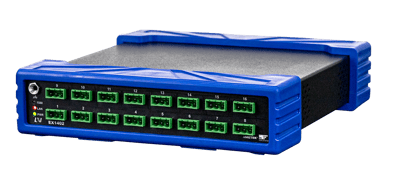Batteries are proliferating, along with the need for battery testing. A new isolated high voltage measurement instrument proves to deliver accurate and highly repeatable voltage measurements, especially for this application.
The market research firm Spherical Insights LLP forecasts the global lithium-ion battery market is growing at a 19.3% CAGR. It will reach $273.8 billion in 2030, a year in which McKinsey & Company estimates that total battery capacity will reach 4.7 TWh. These batteries will power a wide range of products—from wearable electronics to grid-scale backup systems. But McKinsey expects that the bulk of capacity it predicts for 2030 will go into mobility applications, including electric vehicles.
Our white paper Test Ensures Batteries Meet Performance and Reliability Requirements discusses other market trends and application areas. Importantly, it outlines what battery tests need to be performed and discusses key test-equipment features necessary to achieve those tests.
Ranges from ±1 V to ±420 V
One instrument with the necessary features is the EX1402 precision voltage-acquisition instrument from AMETEK Programmable Power’s VTI Instruments brand. The instrument has three software-selectable full-scale input ranges to serve general-purpose as well as battery-specific test applications:
The ±1-V range can measure low-level transducer outputs and current-shunt voltages.
The ±10-V range can handle typical voltages found in test-and-measurement setups; it can measure individual cell voltages for battery tests.
The ±420-V can measure line-power voltages and the voltages of complete battery stacks.
The 16-channel EX1402 also has the resolution and sampling rate necessary for the battery test. The 24 bits/channel resolution lets you characterize various battery types, including ones with very flat discharge curves. A sample rate of 128 kS/s per channel enables the instrument to capture fast voltage spikes and transients, such as those that might occur during fault conditions or when testing a battery’s performance when subjected to pulsed loads.
The instrument’s 16 channels feature 1,000-V channel-to-channel isolation, and each channel offers 500-V channel-to-ground isolation to help you safely measure high voltages. The isolation also minimizes common-mode noise and safeguards against ground loop problems. Other features include eight isolated digital I/O channels as well as high-performance and low-latency programmable digital filters. The EX1402 also exhibits low channel-to-channel crosstalk (-115 dB typical at 1 kHz) and total harmonic distortion (-85 dB typical at 1 kHz).
Easy setup and reconfiguration
The EX1402 is easy to set up and reconfigure. The instrument works on DC or AC power as well as power over Ethernet. Three-conductor HDR 3POS connectors provide a secure, low-cost connection, with the grounding conductor enhancing safety and noise rejection.
The EX1402 can operate as a standalone data logger, stream data to a host computer over LXI-Ethernet, and—for critical data—do both simultaneously. Its high-resolution multifunction display can prove helpful during setup and troubleshooting, even if you plan to control the instrument remotely. The display can indicate factors such as internal PCB voltage levels and system temperature. The diagnostic information is also available remotely and can be accessed by a software-invoked self-test command before each critical measurement.
Scalable to meet evolving requirements
The EX1402’s 16-channel architecture enables you to simultaneously measure multiple individual cells as well as the entire battery voltage. If you require more than 16 channels, you can scale up by adding another EX1402, or you may want to add a different instrument type.
Consider, for example, that battery tests frequently require temperature measurements as well as voltage. In that case, you could add an EX1401—an EX1402 companion instrument that can make thermocouple measurements. Like the EX1402, the EX1401 has 16 isolated channels. It has input voltage ranges of ±0.01 V, ±0.10 V, ±1.0 V, and ±10.0 V, allowing it to make current-shunt measurements and cell voltage measurements in addition to temperature measurements. Like the EX1402, the EX1401 has a resolution of 24 bits per channel as well as 500-V channel-to-ground and 1,000-V channel-to-channel isolation. Its sample rate is 20 kS/s for each channel. EX1401 and EX1402 support the IEEE 1588 Precision Time Protocol (PTP) standard to enable data timestamping and fully synchronize your high-data-rate voltage and temperature data.
In addition, EX1401 and EX1402 are designed to fit seamlessly into your software environment, offering LabVIEW, IVI-COM, IVI-C, Linux, or Windows drivers. They can also operate without a driver through their support of the Representational State Transfer (REST) architecture, which lets them be controlled from any Web browser.
You can write your test programs or use VTI instruments’ EXLab turn-key data-acquisition software, which features intuitive icon-based setup and control and spreadsheet-style channel configuration. It can synchronize different data sources and enable independent sampling rates for each connected instrument. It also provides real-time online graphical data analysis, post-acquisition analysis, and data playback.
With features ranging from flexible software choices to multiple high-resolution voltage ranges, the EX1402 stands ready to meet your battery test needs. As the battery market expands and your battery test needs evolve, you can add temperature-measurement capability with the EX1401. If you need to add test capabilities for other parameters—such as strain or vibration—VTI Instruments also has solutions for you there.





